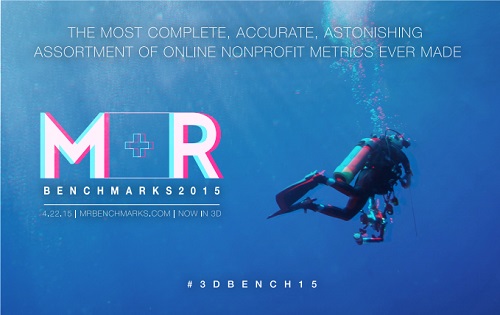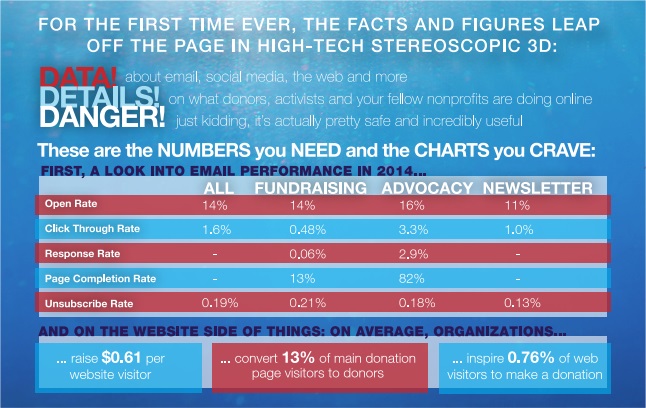
March 12, 2015;Nonprofit Technology Network
The Nonprofit Quarterly attended NTEN’s Nonprofit Technology Conference in Austin last week, which was chock-full of informative sessions on emerging technology trends. M+R Strategies’ Madeline Stanionis and Marc Reuben held a session that shared some upcoming metrics from the 2015 Benchmark Study.
The presentation came complete with 3-D glasses and special effects, and gave us a peek into some interesting statistics for online giving and fundraising:
Sign up for our free newsletters
Subscribe to NPQ's newsletters to have our top stories delivered directly to your inbox.
By signing up, you agree to our privacy policy and terms of use, and to receive messages from NPQ and our partners.

This year, M+R Strategic Services studied 84 participating nonprofits, and this was the first year the benchmark study also looked at cultural organizations.
Some noteworthy trends in online giving:
- Overall email list growth is increasing, but growth is much slower: Although list growth was still on the rise, many organizations are seeing a slower growth rate in email lists as compared to previous years. M+R also shared data that approximately 47 percent of participants suppressed inactive contacts, which may have contributed to a slowing down of list growth. Nonprofit organizations are seeing the value in quality over quantity in list size and are suppressing contacts which have not opened or clicked-through on an email for the past six months to a year.
- Online revenue from email is down: As M+R Senior Vice President Marc Ruben said, “Email is not as awesome as it used to be.” Although the data shows that overall online revenue through email marketing saw a decline, revenue through website visitors is up and organizations raised $.61 per website visitor. Some inferences made during discussion included the rise of mobile technology, and how mobile users could be less likely to click through to fill out a form and donate, which can be discouraging on mobile devices.
- Fundraising open rates increased: This year’s metrics are showing an overall increase in open rates for fundraising campaigns, although we did not see the same growth in click rates. This increase in open rates might have also been influenced by organizations that are creating healthier lists by suppressing inactive contacts.
It’s important to acknowledge that this year’s data is difficult to compare to past Benchmarks studies. Because the groups that participate are completely different each year, year-by-year comparisons made in the 2015 Benchmarks Study are therefore determined using data from this year’s participating groups. This just shows a sliver of the data M+R will release on fundraising trends, including social media statistics, so look out for the full study coming out on April 22nd.—Aine Creedon













